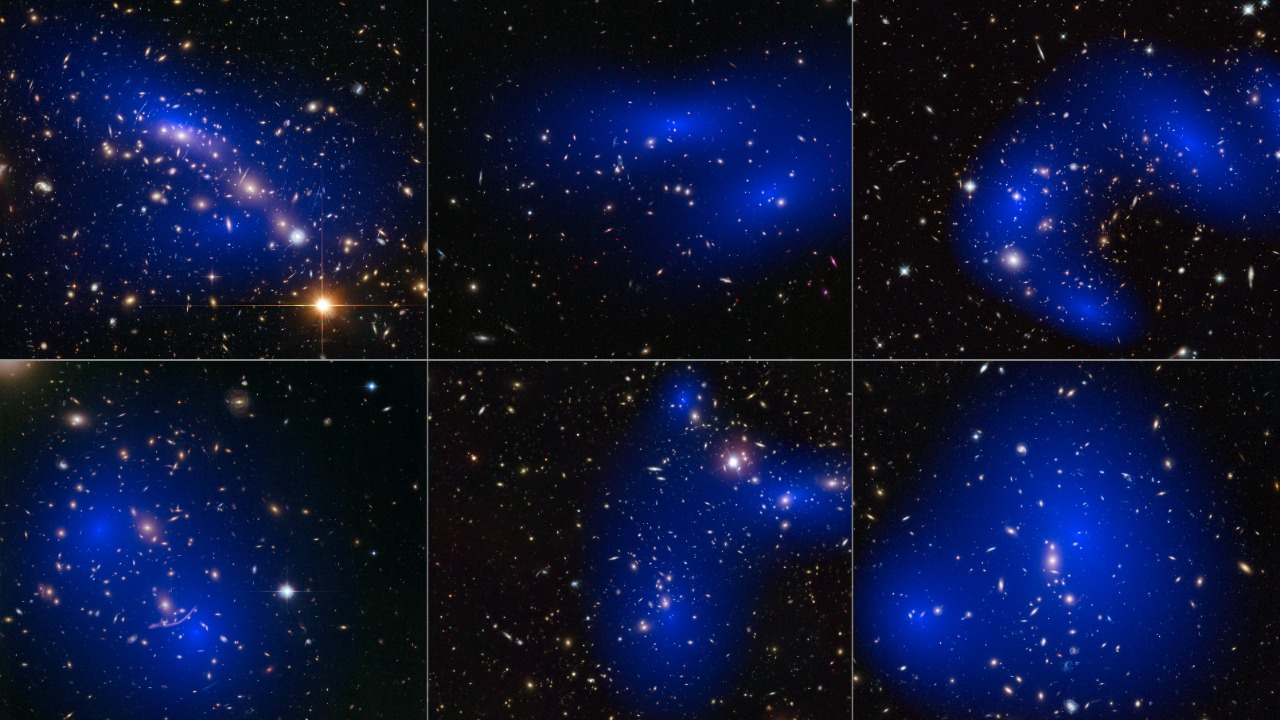
A recent study has made a groundbreaking revelation that dark matter, the elusive and invisible component of the universe, adheres to the same gravitational rules as ordinary matter. This discovery, based on the analysis of galaxy motions from 3 to 7 billion years ago, challenges previous theories about the existence of exotic forces that could differentiate the behavior of dark matter.
Understanding Dark Matter’s Role in the Universe
Dark matter, despite being invisible, is a fundamental component of the universe, making up about 85% of its mass. Its existence has been inferred from its gravitational effects on visible matter. For a long time, scientists have hypothesized that dark matter might interact differently from ordinary matter, possibly through unknown forces beyond the standard four fundamental forces of nature.
However, detecting dark matter directly has always been a challenge. Researchers have had to rely on its influence on galaxy formation and rotation curves to study it. This new study, however, provides a fresh perspective on the behavior of dark matter, suggesting that it follows the same cosmic rules as ordinary matter.
The Study’s Methodology and Data Sources
The research team utilized archival data from galaxy surveys to analyze the motions of structures from 3 to 7 billion years ago. They employed computational models to simulate the gravitational interactions between dark and ordinary matter during these early cosmic epochs. The team then applied statistical techniques to compare the observed galaxy dynamics against predictions from standard cosmology.
The data sources and methodology used in the study were robust and comprehensive, allowing the researchers to draw significant conclusions about the behavior of dark matter in the universe.
Key Findings on Dark Matter’s Gravitational Behavior
The study found that dark matter obeys the same cosmic rules as ordinary matter, showing no deviations in how it clusters and moves galaxies. This evidence suggests that dark matter follows gravity in a manner identical to normal matter, based on velocity dispersions in galaxy groups.
These results were consistent across the observed timeframe of 3 to 7 billion years ago, reinforcing the universality of gravitational laws. This consistency also strengthens the argument that dark matter behaves like ordinary matter under the influence of gravity.
Testing for Deviations in Cosmological Rules
The study also tested whether dark matter obeys regular cosmological rules, including checks for anomalies in large-scale structure formation. The researchers analyzed potential influences from modified gravity theories on galaxy motions during the specified epoch.
Interestingly, the study found no detected irregularities, aligning dark matter’s behavior with Einstein’s general relativity. This finding further supports the idea that dark matter follows the same gravitational rules as ordinary matter.
Implications for Theories of a Fifth Force
The findings of the study have significant implications for theories of a hypothetical fifth force. The results indicate that dark matter may behave like ordinary matter under gravity, with no evidence for additional interactions. This outcome simplifies models of cosmic evolution, reducing the need for exotic physics to explain dark matter’s effects.
Furthermore, these results have a broader impact on particle physics searches, suggesting that dark matter particles likely couple only weakly via gravity. This could guide future research and experiments in the field of particle physics.
Limitations and Avenues for Future Research
While the study provides significant insights into the behavior of dark matter, it is not without its limitations. There are potential uncertainties in the data from distant epochs like 3 to 7 billion years ago, such as resolution limits in telescope observations. Therefore, the findings should be interpreted with caution.
Future research could extend the study to more recent cosmic times or higher-redshift galaxies to confirm the findings universally. Additionally, integrating upcoming data from missions like the James Webb Space Telescope could help refine models of dark matter dynamics and provide a more comprehensive understanding of this mysterious component of the universe.
More from MorningOverview